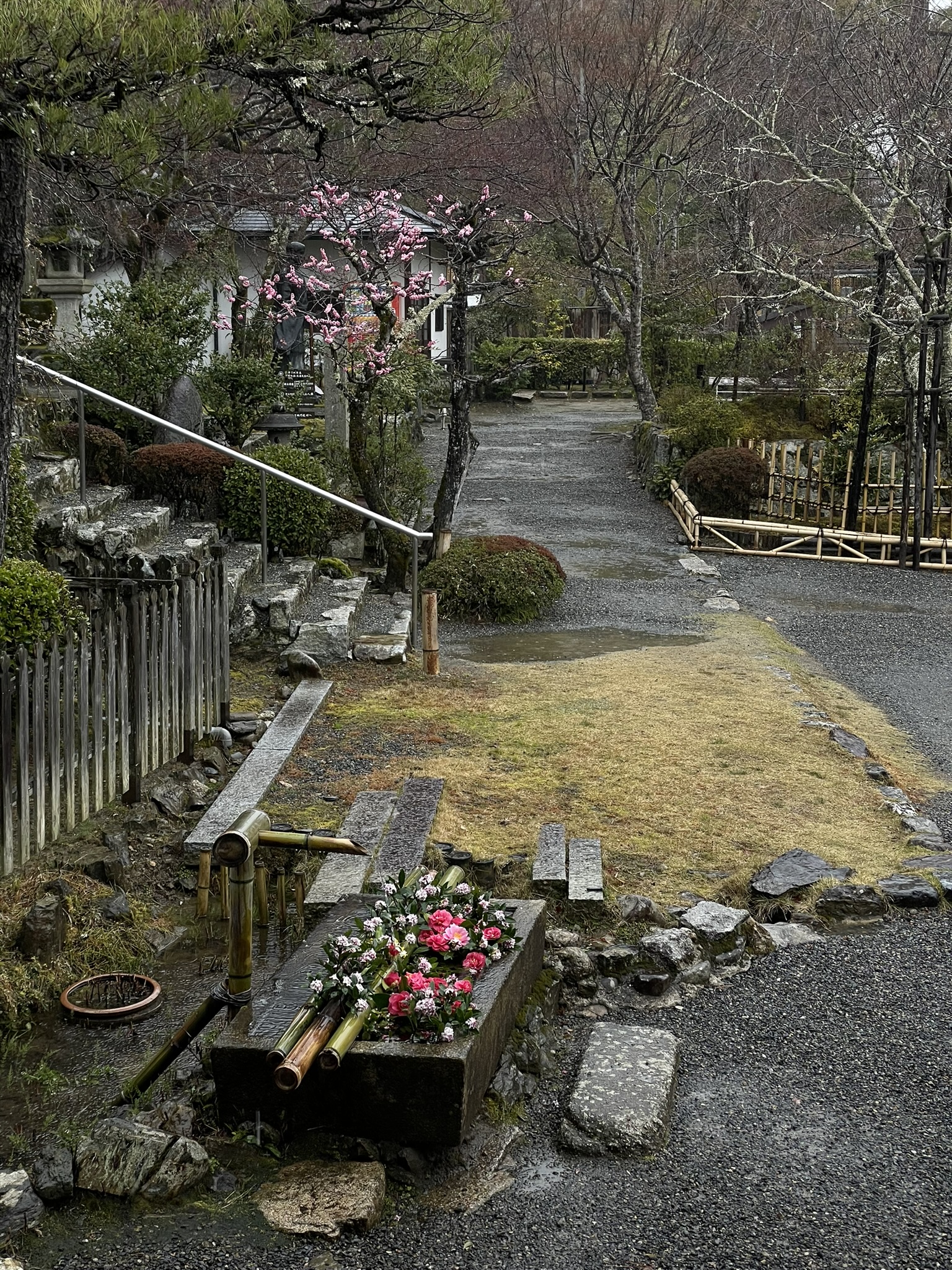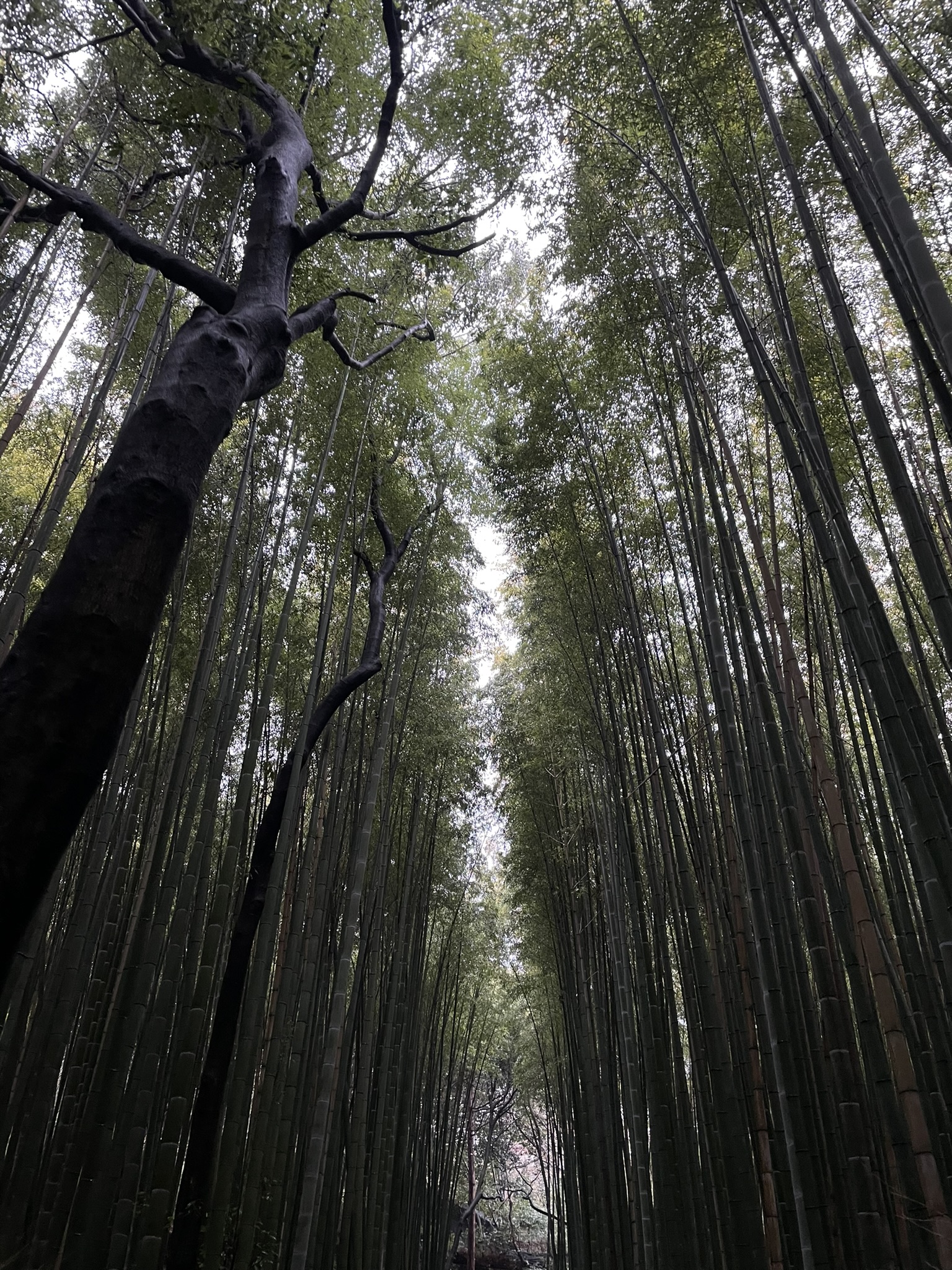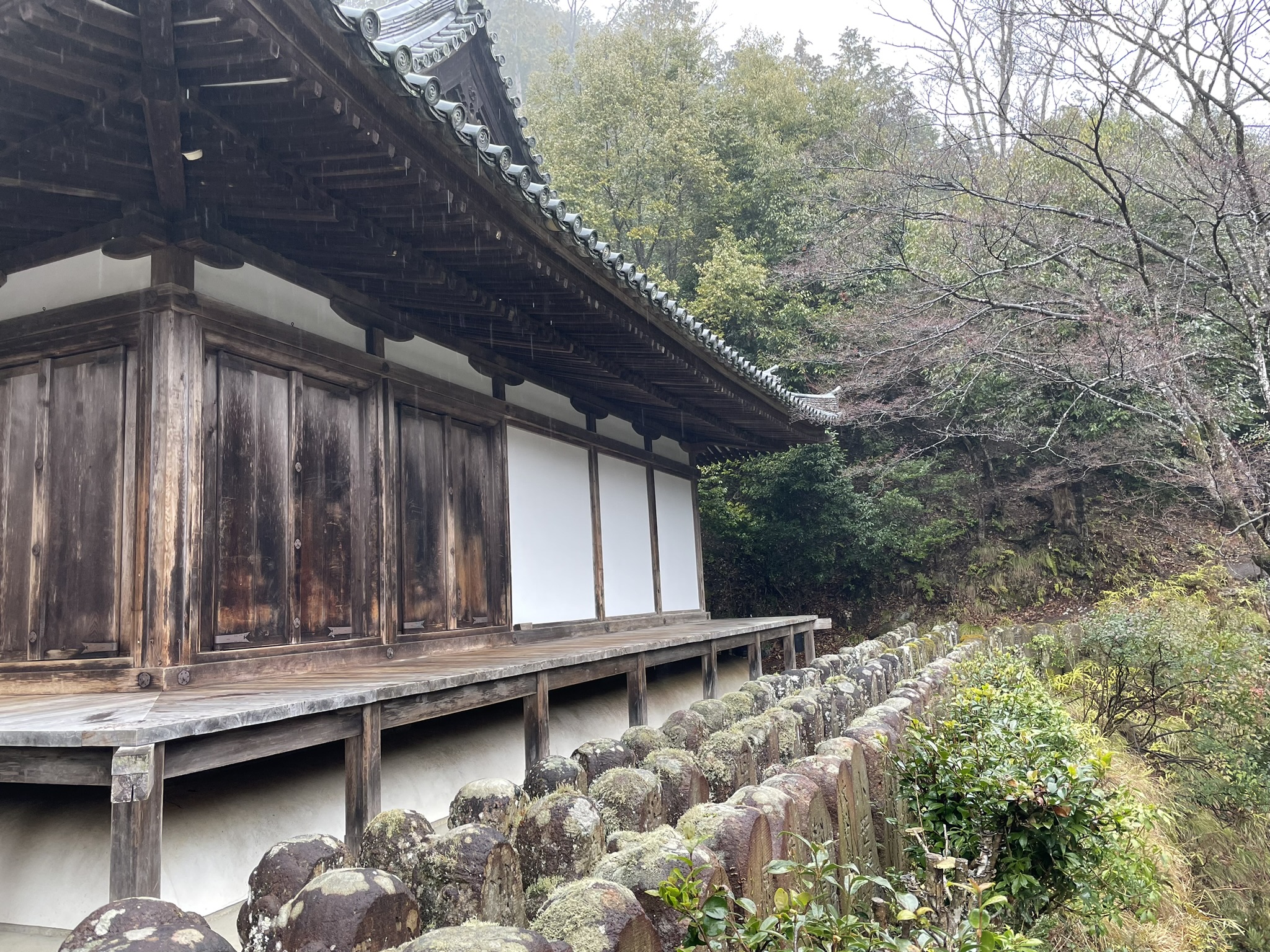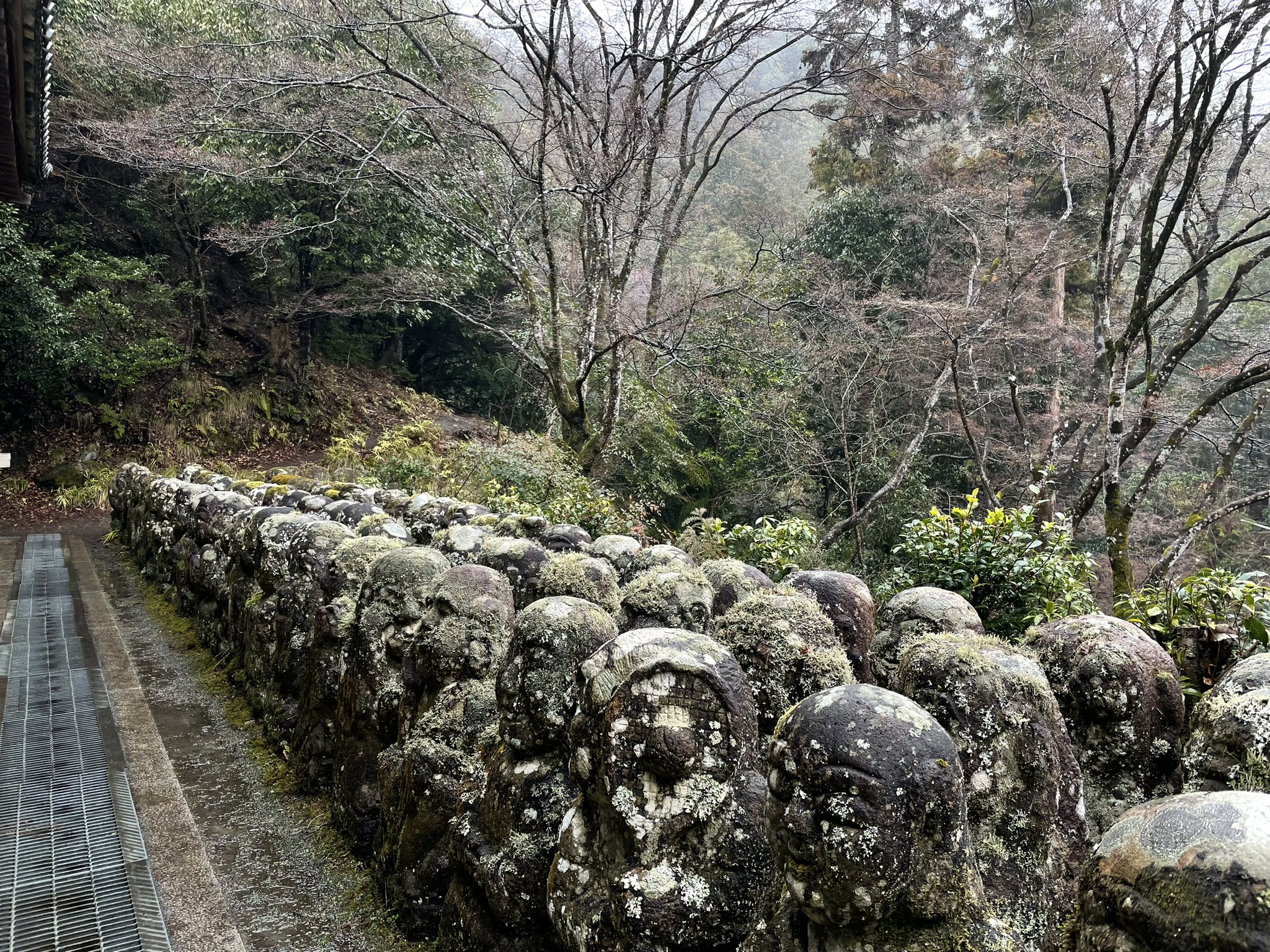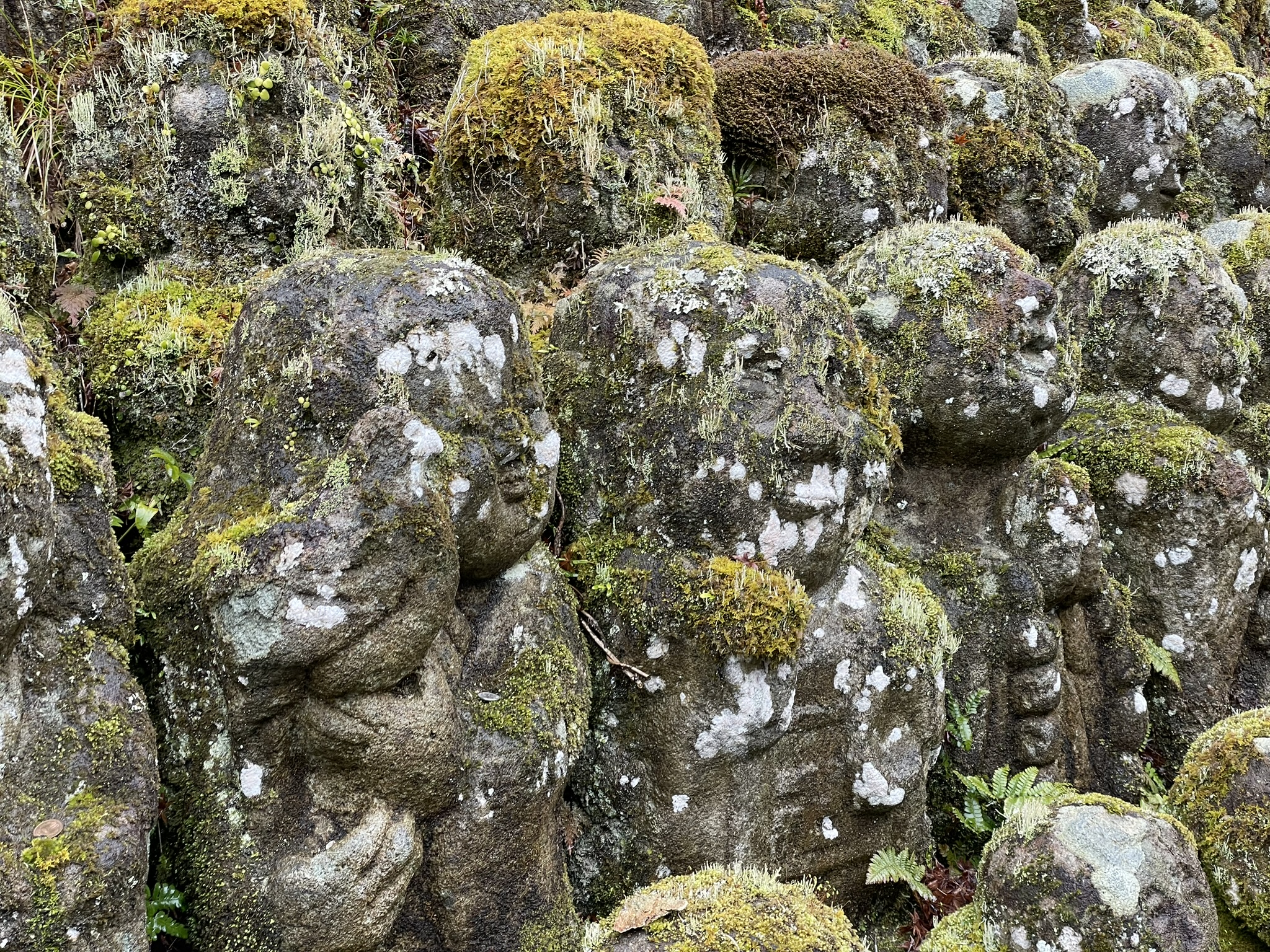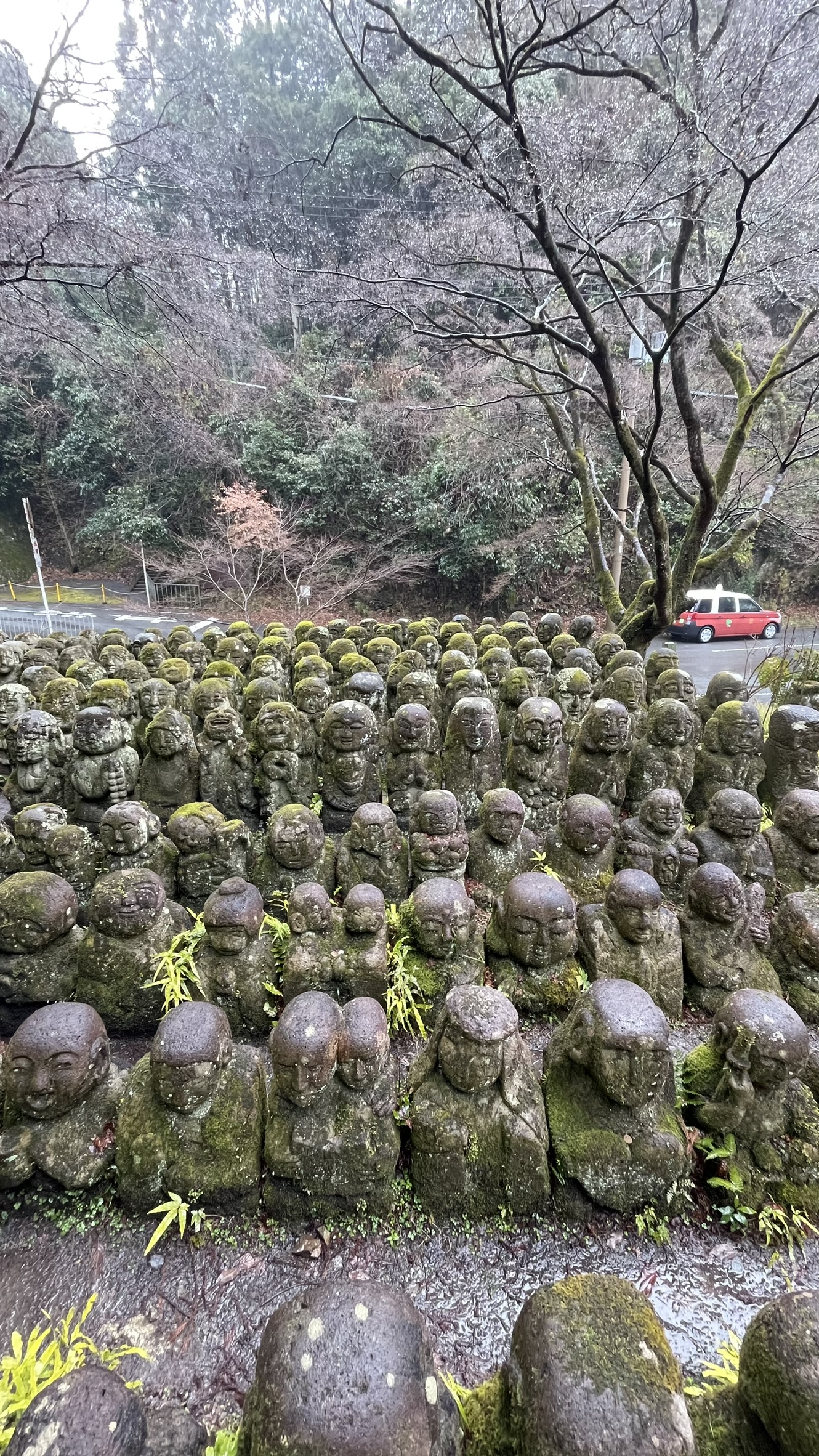From editor’s perspective: Japan’s Arashiyama Bamboo Forest and enigmatic Otagi Nenbutsu-ji Temple

The Arashiyama Bamboo Forest in Kyoto’s Arashiyama district is renowned as one of the world’s most captivating forests.
Its mystical ambiance never fails to captivate visitors.
Walking along the 500-meter (1640.4 feet) trail amid the towering bamboo trees that reach the sky will envelop you in a surreal atmosphere. This bamboo forest, a blend of traditional Japanese culture and nature, is located between Nonomiya Shrine Temple and Tenryu-Ji Temple.
The most convenient way to get to Arashiyama, where you can easily spend a whole day, is to take the JR Saga-Arashiyama line from Kyoto train station.
This line will take you to Arashiyama within half an hour.
Thanks to its densely forested nature, Arashiyama is undoubtedly one of the most photographed areas in Japan during the famous sakura (cherry blossom) season in late March and early April.
Nison-in Temple, Arashiyama, Kyoto, Japan, March 28, 2024. (Photo by Koray Erdogan)
You can even hear this lush forest sing a unique song as its leaves flutter in the breeze. Listen closely. This very sound you just heard might be one of the 100 defining Japan’s essence.
Bamboo forests, in particular, hold an extraordinary place in Japanese culture. After World War II, bamboo trees were the only plant species to survive the atomic bomb disaster.
Arashiyama Bamboo Forest, Kyoto, Japan, March 28, 2024. (Photo by Koray Erdogan)
Like this enduring tree, the Japanese view themselves as resilient, and this perception may have helped them cope with this immense trauma.
Otagi Nenbutsu-Ji Temple, which you can reach on foot from Arashiyama Forest, is not on many sightseeing routes but is one of the most impressive spots in Kyoto. Something sets this Buddhist temple apart from the other 1,600 temples in Kyoto: the 1,200 stone statues surrounding the temple, with expressive facial expressions symbolizing the Buddha’s disciples.
Otagi Nenbutsu-ji Temple, Kyoto, Japan, March 28, 2024. (Photo by Koray Erdogan)
The temple is on a hill at the foot of Mount Atago in Arashiyama, west of Kyoto.
Despite a history steeped in tragedy, the grounds now have an air of tranquility. While the relative lack of tourists undoubtedly contributes to this peacefulness, travelers often credit the temple’s stone guardian statues.
Otagi Nenbutsu-ji Temple, Kyoto, Japan, March 28, 2024. (Photo by Koray Erdogan)
While some statues depict figures in meditation, the majority exude a playful charm.
According to the traditional order of succession, Empress Shotoku, Japan’s 46th and 48th rulers founded the historic temple between 766 and 770 in the eighth century. Its original location was in Higashiyama, not Kyoto, but the nearby Kamo River flooded the Otagi Nenbutsu-ji temple.
Otagi Nenbutsu-ji Temple, Kyoto, Japan, March 28, 2024. (Photo by Koray Erdogan)
A Buddhist monk named Senkan Naigu rebuilt the temple in the 10th century. The locals were grateful and erected a Senju Kannon, the Yaku-yoke statue, to protect the temple against bad luck.
However, the statue’s supposed watchful presence couldn’t keep misfortune away for long.
During the turbulent Kamakura period (1185-1333), civil war ravaged the area, destroying the structures once more. Workers dismantled the colossal statue in 1922 to safeguard the remaining temple hall and gate and transported it to Kyoto.
Otagi Nenbutsu-ji Temple, Kyoto, Japan, March 28, 2024. (Photo by Koray Erdogan)
However, tragedy struck again in 1950 when a typhoon tore through the region, destroying the rebuilt main hall.
Instead of giving up hope, Kocho Nishimura, the newly appointed temple priest in 1955, rebuilt it piece by piece.
Although the original temple was built in the eighth century, Nishimura is responsible for transforming Otagi Nenbutsu-ji into an artistic and spiritual place.
A priest by vocation and a sculptor by passion, he was determined to revitalize the neglected temple and make it a center of spiritual solace and artistic beauty.
Nishimura was also a teacher at the Tokyo University of Art. Throughout the 1980s, he invited amateur artists to the temple to teach stone carving techniques.
At the statues’ consecration ceremony, the head priest acknowledged the artists’ intentions in making them, saying: “The spirit passes from the hands of the creators to the statues, giving them life.”
Otagi Nenbutsu-ji Temple, Kyoto, Japan, March 28, 2024. (Photo by Koray Erdogan)
Smiling statues dotted the temple grounds, depicting a couple raising sake cups, a reader with a child, a victorious boxer and even a figure with a vintage cassette player.
The moss-covered statues at Otagi Nenbutsu-ji are not as old as they look. Nishimura contributed some of the stone figures on the ground. The sculptures in the photographs were added to the temple between 1981 and 1991, but they look older because of the moss.
